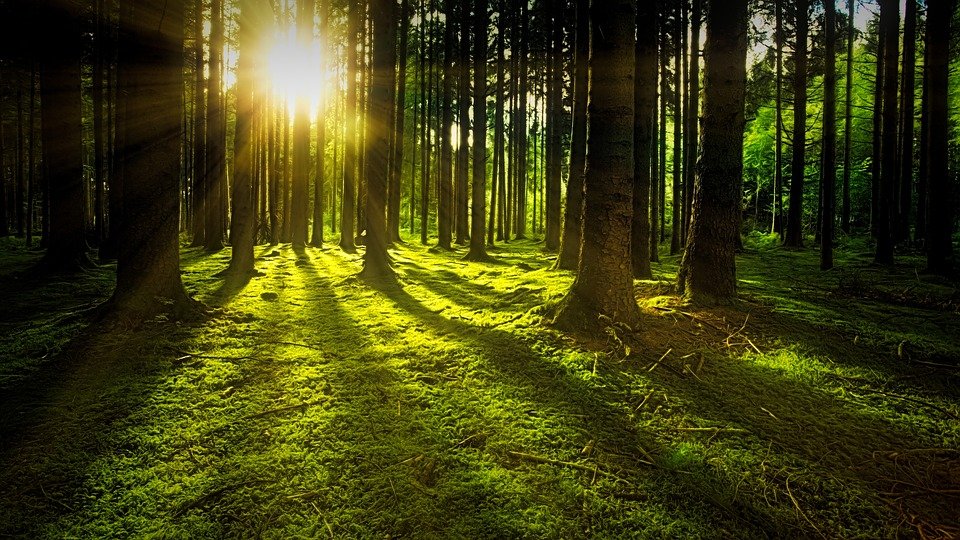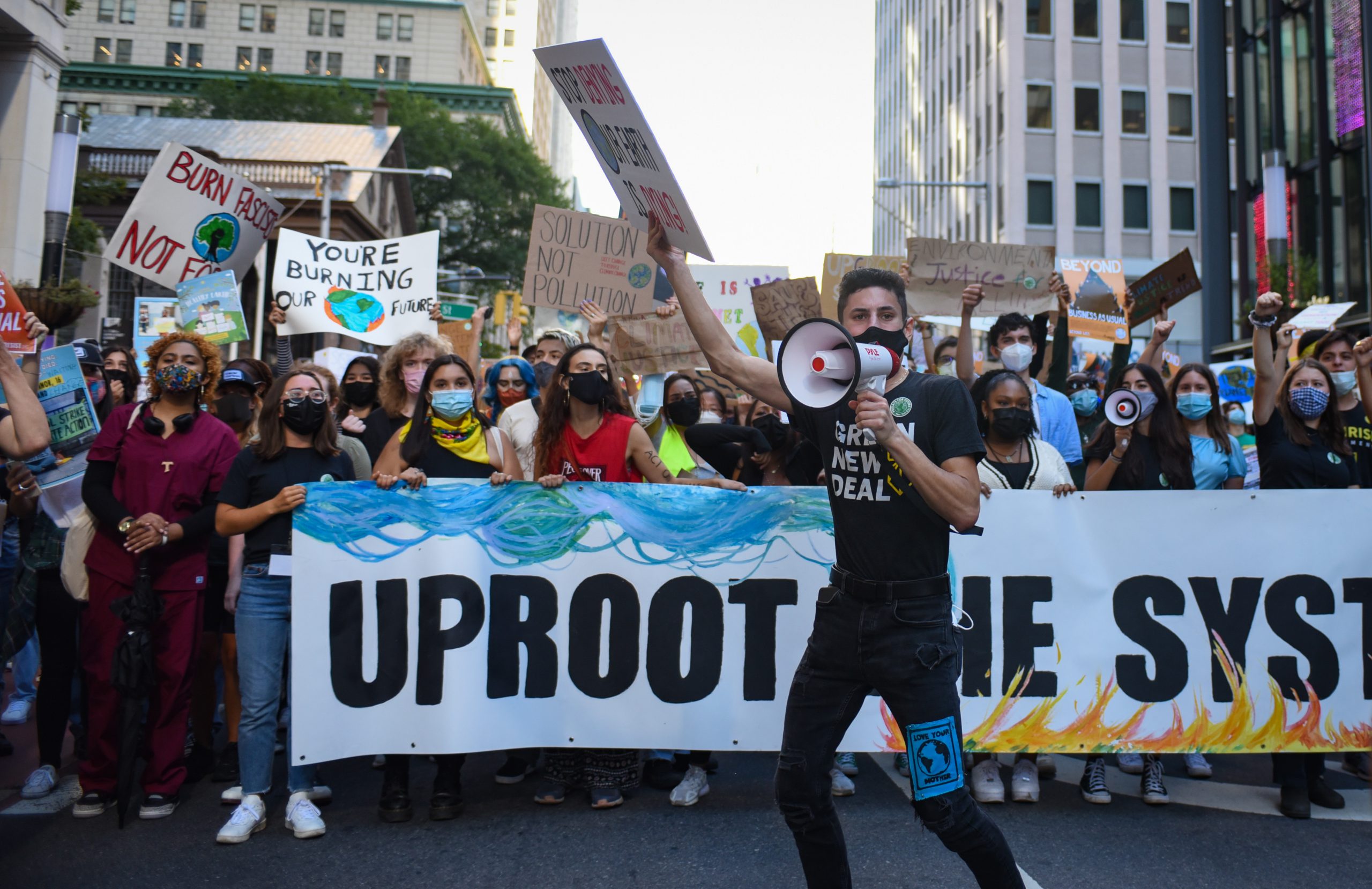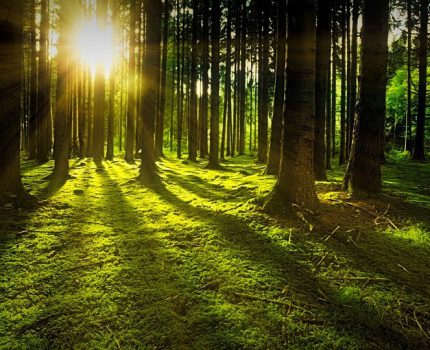
Silas Siakor’s life as a campaigner on environmental issues and human rights in Liberia began in the year 2000 during Charles Taylor’s regime. As staff member of SAMFU (Save My Future) Foundation, a non-governmental organisation (NGO) investigating illegal activities in Liberia’s timber industry, Siakor was responsible for the organisation’s newsletter which required direct interviews with communities living in forest areas to understand their plight in light of a sudden increase in unregulated logging activities by timber companies. (loe.org).
He felt disheartened by the traumatic experiences of these communities. Community members narrated stories of how logging companies had bulldozed entire villages destroying homes and cash crop farms to build roads through them without any compensation to the victims. The timber companies had private militias who curtailed community resistance by physically assaulting, arresting, and detaining individuals. The level of poverty, humiliation, and the widespread human-rights abuses perpetrated against the communities challenged Siakor and his colleagues to address the situation (grist.org).
In the early 2000s (and even currently) most Liberian NGOs relied on stakeholders such as local civil society networks, international NGO partners, and the mass media to disseminate information. Email was the main tool for information and knowledge sharing among local NGO networks. Influential international partners were often the channels through which Liberian NGOs drew global attention to local campaigns. “Today, web and email communications have become the most powerful online communication tools that NGOs have to inspire philanthropy and create awareness for their mission and programs” (2018 Global NGO Technology Report).
In an interview with Grist.org, Siakor mentions that the link between illegal logging and civil war in Liberia was public knowledge in 2002. He and his colleagues therefore compiled findings of covert monitoring of illegal logging operations in Liberia between 1999 and 2001. The report, which criticised Taylor’s government of violations of Article 7 of the Liberian Constitution generated polarised debates within SAMFU Foundation. These debates among colleagues led to the agreement that as the author of the report, Siakor would take responsibility for its content (SDI’s 10-Year Positive Peace Crusade, 2014, p.6 ). He subsequently became the face of the campaign against illegal logging activities in Liberia.
The question on ways in which development work and activism overlap can be answered with Siakor’s story. Activism and social movements come in many forms. The work of nonprofit development organisations may require that they oppose the encroaching activities of a corporate entity in marginalised communities. This opposition may take the form of advocacy or naming and shaming. When public regulation becomes vulnerable to industry lobbying, a socially harmful project by a firm may be approved and implemented. This is when an NGO may decide to oppose the project on the basis of its own information. Daubness and Rochet (2018, p.1-2) define such non-governmental organisations as NGO activists.
Similar to social movements like Black Lives Matter, NGO activists have a mission to expose institutionalised inequality and injustice. This often means they must challenge established authority. “Disruption, whether by civil disobedience or occupation or some other form of direct action, is a complex strategy for movements. Successful use of the tactic requires a delicate balance among challenging authority, bearing the costs of challenging authority, and making a case for the legitimacy of the protest ” (Tufekci, 2017, p197).
In like manner, publishing the report led to Siakor and his colleagues being summoned by the Liberian Senate to explain the motive behind the preparation of the report. Siakor subsequently fled Liberia in 2003 in fear for his life due to threatening statements by Charles Taylor in the media and advice from opinion leaders, and later returned after Taylor was ousted in 2003 (grist.org).
After presenting the report to partner international NGOs and influential policymakers, the published report led to sanctions being placed on exported timber from Liberia by the United Nations in 2003. Siakor’s experiences inspired him to found the Sustainable Development Institute (SDI) in 2002, a non-governmental organisation which works with a network of grassroots activists to collect and document evidence of government and company infractions in the forestry industry and to advocate for the meaningful participation of forest communities in decisions about natural resources which affect their well being, livelihoods, and culture (SDI website).
The strength of social movements lie in their capacities: to set the narrative, to affect electoral or institutional changes, and to disrupt the status quo (Tufekci, 2017, p.191). The same applies to NGO activists like the Sustainable Development Institute (SDI) whose brand of advocacy focuses on investigating and publishing empirical research and reports on perpetrators of injustice in Liberia’s forestry industry. Their sole objective is to influence or change government policy on the forestry industry.
In an interview with Micro-magazine in 2013, Silas discussed how digital technology access has transformed the way SDI works in relation to collecting, storing, and sharing data on forestry issues. He had his first phone in 2003. Then, one needed USD80 to make a mobile phone call. Also, SDI did not have cameras for documenting their work. This meant evidence-based reports were mostly text. By 2013, he and his activist colleagues had GPS in the field to map out and document different logging practices, and they also had cameras to collect evidence.
Access to the internet enabled SDI to network with various international collaborators. This access gave the organisation greater reach when investigating the track record of international logging companies operating in Liberia. Information exchange and close working relationships with networks of international environmental activists helped SDI to improve the quality of their documentation on illegal logging activities in Liberia. This, according to Siakor, meant that they were not focused only on Liberia, but were also working within the context of global environmental activities. (micro-magazine).
However, most of the information SDI collected from 2002 to 2013 was stored in collective memory disks or ended up trapped in reports on old virus ridden computers. In 2014, Making All Voices Count funded a £40,000 project between SDI and TIMBY (This is my backyard) Productions Incorporated. Anjali Nayar, founder of TIMBY and director of a documentary film on Silas Siakor’s work through SDI collaborated with SDI and a crew of film makers, technologists, and journalists to develop the TIMBY app to democratise information shared in the film, and to also improve the data collection and production processes of SDI.
In designing apps for countries in the Global South, Heeks (2017, p.60) argues that a gap may exist between the design of an ICT4D application and the contextual realities into which it is introduced. The larger that gap, the greater the risk that the ICT4D application will fail. To avoid such failures more effort should be put into greater local appropriation of ICTs in developing countries. This means the technology must be designed to meet the reality of users’ needs. The TIMBY app, designed based on SDI’s work processes, input from forest community members, and other civil society organizations meets this criteria.
It includes an encrypted reporting tool with GPS and time-stamps which allow real-time reporting from anywhere. SDI activists and target communities can submit reports in various formats including documents, photographs, videos, and audio clips. The app has an investigation dashboard which allows for the review and verification of reports and an interactive story-telling tool which can be used to develop and publish verified reports directly to one’s website, or as press releases whilst keeping citizens anonymous and safe in the field. Stories can also be embedded or shared on social media platforms. The objective behind the app’s design is to create a participatory, secure and effective mechanism for evidence-based reporting of environmental crimes (Timby website).
“When designed with users’ specific context in mind…[d]igital tools are powerful, but they are not only enhancers of capacity; they also affect movement choices and readiness, and lead to a variety of outcomes, especially when they are coupled with the cultural and political choices of social movements…If there is a broad claim to be made about digital technologies and social movements, it is that these tools often greatly enhance narrative capacity…” (Tufekci, 2017, p.203-204). Similarly, SDI’s collaboration with TIMBY resulted in the immediate improvement of SDI’s turnaround time for producing evidence-based reports which transitioned from months to weeks and safer storage systems for documents.
According to a news story on Making All Voice Count, the app enhanced the bottom-up participatory approach of the organisation’s interaction with target community members with many of them acting as citizen journalists. In a statement, SDI declared:
“TIMBY put the process in the hands of the community, and changed the power relationships between SDI and the local youth. They became the drivers of the investigation, the owners of the information and they could bring their own issues forward. As a result they felt empowered to own the process and it felt like it was theirs. I don’t believe this would have happened without TIMBY.”
On the other hand, the IT developers at TIMBY see the app “as a tool that advances the work of creative/innovative/impassioned organisations and individuals on the ground who are already doing great work.”
SDI’s activism while using the app has led to a number of successes including using verified documentary evidence to influence companies to sign memorandums of understanding (MoUs) to not encroach on community lands, the cancellation of over 60 illegal forestry concessions, and exposing a 10.5 million dollar scandal, where corporate funding bypassed government accounts.
Prior to TIMBY, the organisation had succeeded in changing policy and history in Liberia by getting the government of President Johnson Sirleaf to reform land rights laws. New laws such as the National Forestry Reform Law (2006) and the Community Rights Law grant communities land rental fees, revenues from logging concessions on their forestland, and ownership and user rights over forestland and forest resources. However, Liberian governments struggle with implementing these laws.
Through his activist work in SDI, Siakor has won a number of international awards including the Whitley Award for Environment and Human Rights in 2002 (UK), the Goldman Environmental Prize in 2006 (US), and the Mundo Negro Fraternity Award in 2018 (Spain) and was among Time Magazine’s Heroes of the Environment in 2008. However, the organisation has been criticised for producing sensational, one-dimensional reports on the forest industry (SDI:10-year positive peace crusade, 2014, p. 14, 19, & 20).
Despite the organisation’s successes and national influence or perhaps because of it, its social media accounts (twitter, YouTube, website blog, and mixcloud) haven’t been updated for a while. SDI’s strength lies in being able to collaborate and engage in sustained dialogue and relationships with a range of stakeholders including target communities, local, national, and international NGOs (such as Global Witness), and donors. As at 2014, it had a bi-monthly radio show discussing issues related to land, forests, the mining sector, oil and the activities of companies in the natural resources sector which featured civil society actors, private sector operators, government officials, and community activists (SDI:10-year positive peace crusade, 2014, p.7 & 15). Yet, social media does not appear to have played a strong role in facilitating the organisation’s successes. As with most NGOs in the Global South, there is most likely no dedicated staff to attend to the organisation’s social media presence, although “…71% of
NGOs agree that social media is effective for online fundraising and 25% of donors say that social media is the communication tool that most inspires them to give” (2018 Global NGO Technology Report).
This blogging project has helped me to explore different forms of activism through time and to understand the various ways activists use technology to advance their cause. The interactive nature of working with a group of colleagues willing to contribute generously to discussions and group activities made it easier to reflect on challenging aspects of the ICT4D course such as where activism and development work intersect in the Global South and what role digital technologies play in this intersection. The group dynamic through this exercise has helped me to see how group enthusiasm for a project can enhance its products despite the project’s demands. I have used blogging platforms other than WordPress to publish creative work, and this exercise has added a new layer of understanding of how blogs need not only be for entertainment but can be used to discuss serious issues or advance a cause.
References
- Heeks, Richard. 2017: Information and Communication Technology for Development (ICT4D). Abingdon: Routledge.
- Tufekci, Zeynep. 2017: Twitter and Tear Gas-The Power and Fragility of Networked Protest. New Haven, CT: Yale University Press.
- Daubanes, Julien ; Rochet, Jean-Charles. 2018: The Rise of NGO Activism. http://faere.fr/pub/WorkingPapers/Daubanes_Rochet_FAERE_WP2019.01.pdf (accessed 2021-11-08)
- Micromag.evidenceandinfluence.org, (2013). Investigating the connections between logging and corruption in Liberia, https://micromag.evidenceandinfluence.org/article/investigating-the-connections-between-logging-and-corruption-in-liberia/index.html (accessed 2021-11-08)
- Grist.org, (2006). Silas Siakor put his life on the line to save Liberia’s forests, https://grist.org/article/nijhuis-siakor/ (accessed 2021-11-08)
- Loe.org, (2006). Liberating Liberia, http://www.loe.org/shows/segments.html?programID=06-P13-00018&segmentID=5 (accessed 2021-11-08)
- Nptechforgood.com, (2018). 2018, Global NGO Technology Report, https://www.nptechforgood.com/wp-content/uploads/2020/09/2018-Tech-Report-English.pdf (accessed 2021-11-08)
- Researchgate.net, (2014). SDI’s 10-Year Positive Peace Crusade, https://www.researchgate.net/publication/307122484_SDI’s_10-Year_Positive_Peace_Crusade
(accessed 2021-11-08) - Makingallvoicescount.org, (2014). https://www.makingallvoicescount.org/project/involving-citizens-in-decision-making-processes-in-liberia/ ; https://www.makingallvoicescount.org/news/timby-citizen-gathered-evidence-boosts-efforts-hold-government-accountable-environmental-activities/ (accessed 2021-11-08)

